New Orleans’ resilience in the face of Hurricane Katrina’s devastation is a remarkable story. This driving tour invites visitors to explore the city’s past, present, and future as it grapples with the impacts of the historic storm. From the remnants of destruction to the community’s unwavering commitment to rebuilding, the tour promises an insightful journey that sheds light on the city’s ongoing transformation. What lessons can be learned from New Orleans’ experience, and how might this tour shape understanding of the challenges and successes in the aftermath of natural disasters?
Key Points
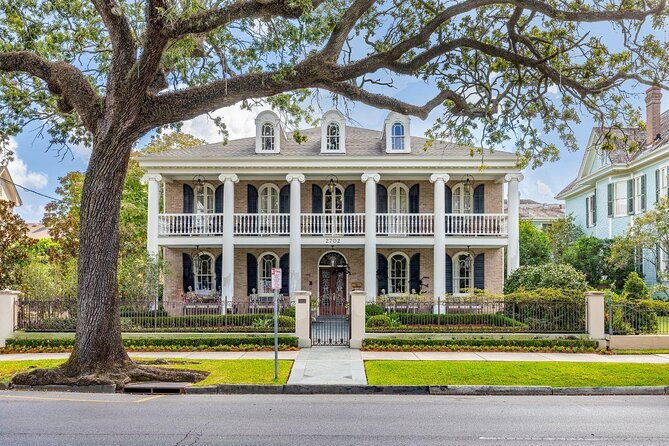
- Explore New Orleans’ vulnerability to hurricanes and flooding, as evidenced by the devastation of Hurricane Katrina in 2005.
- Understand the systemic issues, including aging infrastructure and subsiding land, that contributed to the catastrophic impacts of the storm.
- Witness the ongoing efforts to strengthen the city’s resilience, such as upgrades to the levee system and improvements in emergency preparedness.
- Observe the progress made in rebuilding and revitalizing affected neighborhoods with a focus on sustainable and equitable development.
- Gain insights into the long-term strategies and projects being implemented by the Army Corps of Engineers and local communities to enhance New Orleans’ ability to withstand future climate threats.
New Orleans’ Vulnerability
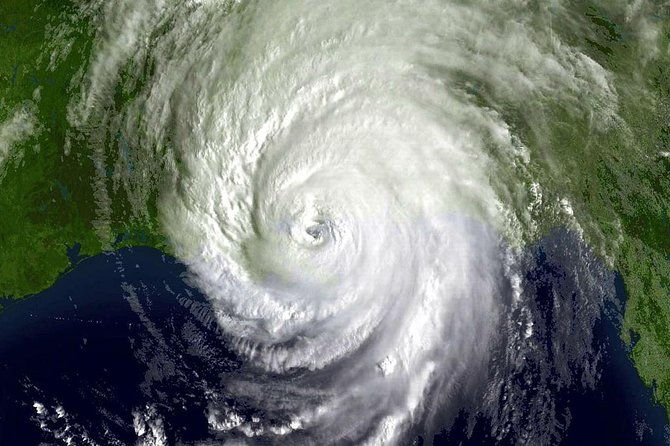
As a city largely situated below sea level and surrounded by water, New Orleans has long been vulnerable to the devastating impacts of hurricanes and flooding.
The city’s geography, aging infrastructure, and socioeconomic disparities have all contributed to its susceptibility to natural disasters. Outdated levee systems, subsiding land, and inadequate drainage have left many neighborhoods exposed to storm surges and floods.
The effects of Hurricane Katrina in 2005 laid bare these systemic vulnerabilities, resulting in catastrophic damage and loss of life.
Hurricane Katrina’s devastation exposed New Orleans’ systemic vulnerabilities, resulting in catastrophic damage and loss.
Ongoing efforts to strengthen the city’s resilience are crucial in the face of increasing climate threats.
Looking for more options in New Orleans? We've reviewed plenty of other experiences.
Causes of Hurricane Katrina
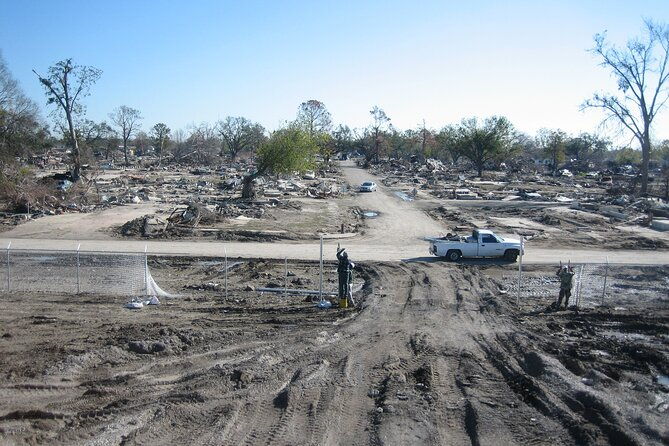
Hurricane Katrina was a powerful and devastating storm that made landfall on the Gulf Coast of the United States in August 2005. Several factors contributed to the storm’s catastrophic impact.
The city’s low-lying geography, outdated levee system, and socioeconomic disparities all played a role. Plus, climate change-induced sea level rise and warmer ocean temperatures intensified Katrina’s strength.
Poor urban planning, lack of investment in infrastructure, and slow emergency response further exacerbated the situation. Understanding the complex causes of this disaster is crucial to building resilience and preventing similar tragedies in the future.
Devastating Effects of the Storm
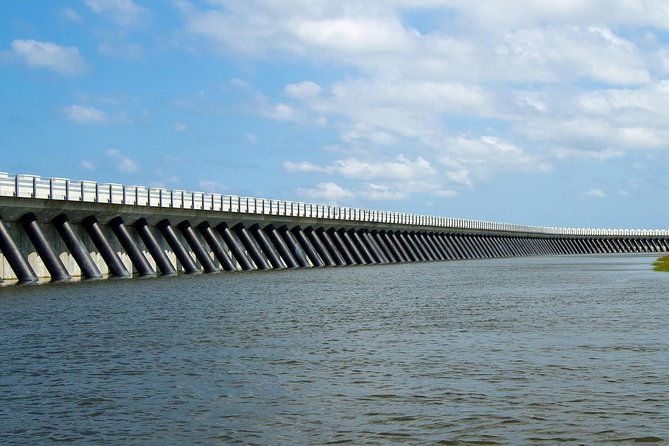
When Hurricane Katrina made landfall in August 2005, it unleashed a catastrophic chain of events that devastated the Gulf Coast region. The storm surge overwhelmed levees, flooding 80% of New Orleans. Tens of thousands were left stranded without power, clean water, or medical care.
Over 1,800 people died, and property damages exceeded $125 billion, making Katrina one of the costliest natural disasters in U.S. history. The city’s poorest communities suffered the worst impacts, exposing deep socioeconomic inequalities.
Rebuilding efforts continued for years, but many neighborhoods never fully recovered. The devastation underscored the vulnerabilities of coastal cities facing the increasing threats of climate change.
Rebuilding Efforts
In the aftermath of the catastrophic damage, the city of New Orleans embarked on a long and arduous journey to rebuild and recover. Residents and officials worked tirelessly to repair infrastructure, restore essential services, and revitalize communities.
Rebuilding efforts focused on strengthening flood defenses, improving emergency response systems, and promoting sustainable development. The tour showcases ongoing projects by the Army Corps of Engineers to enhance the city’s resilience against future storms.
Visitors can observe the remarkable resilience of the New Orleans community as they work to reconstruct their homes, businesses, and neighborhoods.
Community Resilience
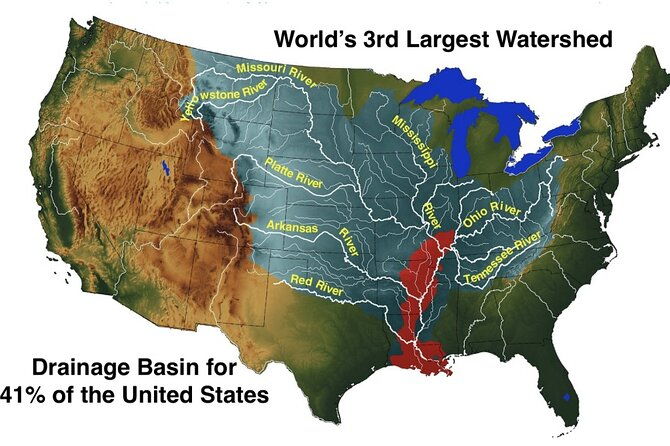
Despite the overwhelming challenges posed by Hurricane Katrina, the people of New Orleans have demonstrated remarkable resilience in rebuilding their communities. Through grassroots initiatives, community organizations, and individual efforts, residents have reclaimed their neighborhoods, supported one another, and forged a path forward.
Key examples of this resilience include:
-
The Lower Ninth Ward’s revitalization, with the construction of sustainable homes and the creation of community gardens.
-
The hotel of the Resilience Lab, a hub for innovative strategies to address climate change and disaster preparedness.
-
The flourishing of local businesses, cultural institutions, and a vibrant arts scene, all contributing to the city’s economic and social recovery.
- Swamp Boat Ride and Oak Alley Plantation Tour From New Orleans
- New Orleans Adults-Only Ghost, Voodoo and Vampire Tour
- St. Louis Cemetery No. 1 Official Walking Tour
- New Orleans Self-Transport Swamp and Bayou Boat Tour
- New Orleans Demonstration Cooking Class With Meal
- New Orleans Garden District History Walking Tour
Storm Defense Projects
The Army Corps of Engineers has spearheaded a series of ambitious storm defense projects across New Orleans in the aftermath of Hurricane Katrina. These include elevating levees, strengthening floodwalls, and installing massive pumping stations to mitigate future flood risks.
Visitors on the driving tour can observe the ongoing construction and learn about the engineering challenges involved. Discussions also cover the role of the Corps in managing the city’s complex network of canals and waterways.
Visitors gain insights into the multifaceted approach to bolstering New Orleans’ resilience against extreme weather events.
Ongoing Developments
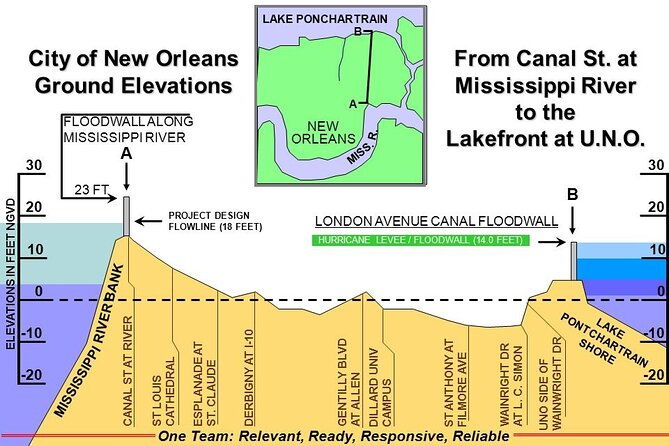
Alongside the Army Corps of Engineers’ ongoing storm defense projects, the city of New Orleans also continues to see a range of other developments in the wake of Hurricane Katrina.
These include:
-
Investments in resilient infrastructure, such as upgraded drainage systems and floodwalls, to better withstand future storms.
-
Revitalization of neighborhoods, with a focus on sustainable and equitable rebuilding efforts.
-
Advancements in emergency preparedness and response capabilities, empowering the community to be better prepared for potential disasters.
These ongoing developments aim to fortify New Orleans, both physically and socially, as the city navigates the long-term impacts of Hurricane Katrina.
Frequently Asked Questions
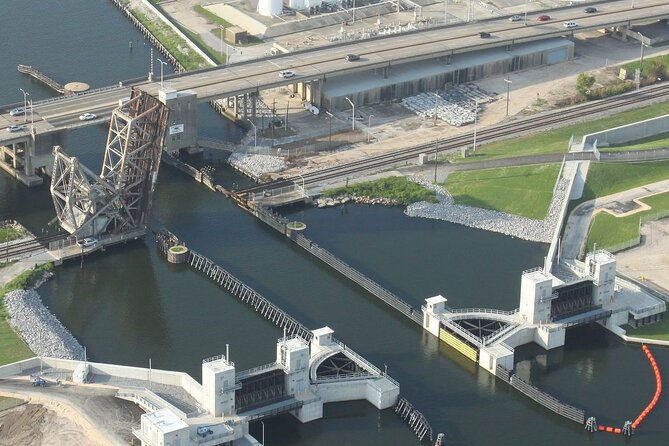
What Is the Duration of the Tour?
The tour is a 3-hour private driving tour of New Orleans, focused on exploring the causes and effects of Hurricane Katrina, one of America’s worst natural disasters.
Can I Book the Tour for a Group Larger Than 4 People?
Yes, larger groups can be accommodated upon request. The tour is available for up to 4 people per booking, but the provider can arrange for larger groups to participate in the 3-hour driving tour of New Orleans focused on Hurricane Katrina.
Is There an Option to Request a Pickup Location?
Yes, you can request a pickup location for the tour. The meeting point is provided, but the tour operator is willing to pick up groups from a predetermined location of your choice.
Are There Any Discounts or Package Deals Available?
There aren’t any published discounts or package deals for this tour. However, the company may be willing to negotiate group rates for larger parties. Travelers should inquire about any special offers when booking the tour.
Can I Change or Cancel My Booking Without Penalty?
The tour offers free cancellation up to 24 hours before the experience starts. Customers can secure their spot while staying flexible with the reserve now, pay later option.
The Sum Up
The "Hurricane Katrina: Past, Present and Future Driving Tour" provides a powerful journey through New Orleans’ resilience. Visitors can witness the storm’s enduring impact and learn about the city’s efforts to rebuild and enhance its defenses. This tour serves as a poignant reminder of the challenges faced and the commitment to creating a more sustainable and equitable future for the city.
More Tour Reviews in New Orleans
Still browsing? Here are more New Orleans experiences we've covered recently
- New Orleans’s 5 Best Drinking Tours: Which To Choose?
- 14 Best Walking Tours In New Orleans (With Reviews & Prices)
- The 14 Best Tours In New Orleans
- Our 14 Favorite New Orleans Tours & Experiences
- 7 Most Highly Rated Historical Tours In New Orleans
- Caesars Superdome: Transportation to New Orleans
- New Orleans: French Quarter Ghost and Haunted House Tour
- New Orleans: Ghosts of French Quarter Nighttime Walking Tour
- French Quarter Ghost Walk
- Garden District Walking Tour
- Ghost Tour with ghost hunting gear
- Ghosts of the French Quarter Walking Tour
